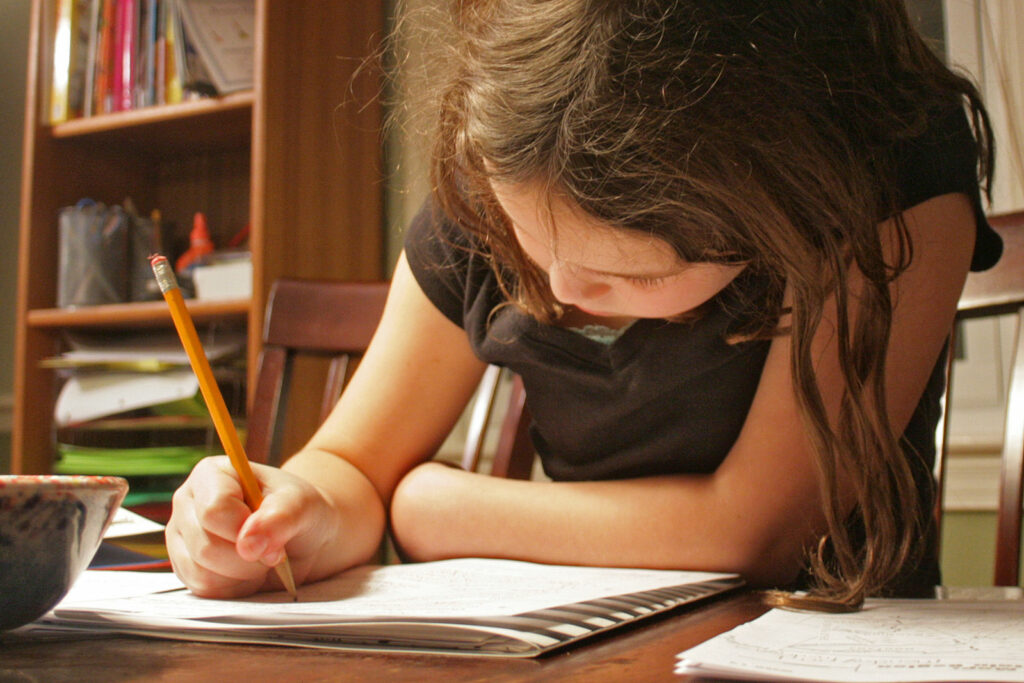Maximizing Our Children’s Screen Time
Screens, screens, everywhere are screens; they are in our homes, on our desks, in our pockets, on our wrists and in our cars. You can’t get away from them; they assist us, they remind us, they warn us, they entertain us, they keep us connected and they teach us. But like all good things they can be overused. How do we balance our lives and maximize our screen time? More importantly, how do we maximize our children’s use of screens?
So, you’ve decided to enroll your child in some online classes but you are concerned about the inevitable, increased screen time. While research shows that the nature of online activities matters more than the amount of time children spend engaging with technology, there are also additional steps you can take to optimize their online time.
1. Use Technology Together

Online learning programs that children can easily access from home provide the whole family with an opportunity to participate in the learning process. According to the School of Economics’ report, children’s screen time doesn’t have to mean isolation from their family. On the contrary, digital media can bring families together, as children and parents play educational games, watch documentaries, and explore online classes together.

2. Stick to the School Day Routine
To maximize the benefits of online learning, encourage your child to stick to their school day routine. Although learning from home, children need a routine similar to that of a traditional school, with online lessons and breaks between them. Routine and predictability provide a sense of safety and confidence, ease tension, and help kids manage stress.
3. Develop Time Management Skills

Good time management means that a child is planning their online lessons and homework to make the best use of their time and boost efficiency. Help your child identify their time wasters and set priorities. Help them minimize distractions and set clear goals which can improve focus, increase motivation, and boost productivity.
4. Apply learning to real life
Young children may have difficulty making the connection between what they learn on the screen and real life. Be sure to check in on them periodically to see if they understand what they are learning. After their online session reinforce what they learned by having a conversation about it. Having them tell you about it will not only show their understanding but will help them commit it to memory.
5. Employ a multi-disciplinary approach
Oftentimes in schools a multidisciplinary approach is used. Teachers of different subjects collaborate their teaching so children have a better understanding of the material. We can use this approach at home. If your child is studying an ancient civilization in an online geography class, have him paint a piece of pottery to look like a relic from that civilization in art class and in a writing class have them write dialogue between two people from that civilization. Now they not only have talked about the civilization, created an artifact from that civilization and wrote about that civilization- they have reinforced their learning about that civilization.
6. Set screen free times

If we forbid screen time children are more likely to resist, so have a conversation about it, being sure to follow your own guidelines by limiting your phone time. Set times without screens; make dinner a screen free zone and make sure to turn off screens 30 mins before bed. Making sure screen time doesn’t interfere with sleep, diet, social interactions and regular exercise will provide balance and help your child become well rounded. This will make the screen time they do have more enjoyable and more effective.
7. Provide screen breaks

It has been said that a 5 min break per every hour of online time is beneficial. But in addition to this be sure to infuse the day with other activities to prevent boredom and the glazed over look. We all know that look of a child that has played video games for far too long, or a child that has been mindlessly watching Youtube videos to the point of not even being aware of her surroundings. Before this happens, go outside with your child, play a game, take a walk, or maybe even take them for a healthy treat. When they get back to the screen they will be refreshed. Of course you can’t pull them out during a live class but after the class you can provide them with a much needed break.
Technology has been a major help in our lives and we definitely need it in this modern age but it is certainly a double edged sword. As helpful as it is, it can isolate us, make us sedentary and one dimensional but if we manage our screen time, take periodic breaks, apply what we learned in real life, and don’t let our screens interfere with our social lives we will find the balance needed to make our screen time optimal.


